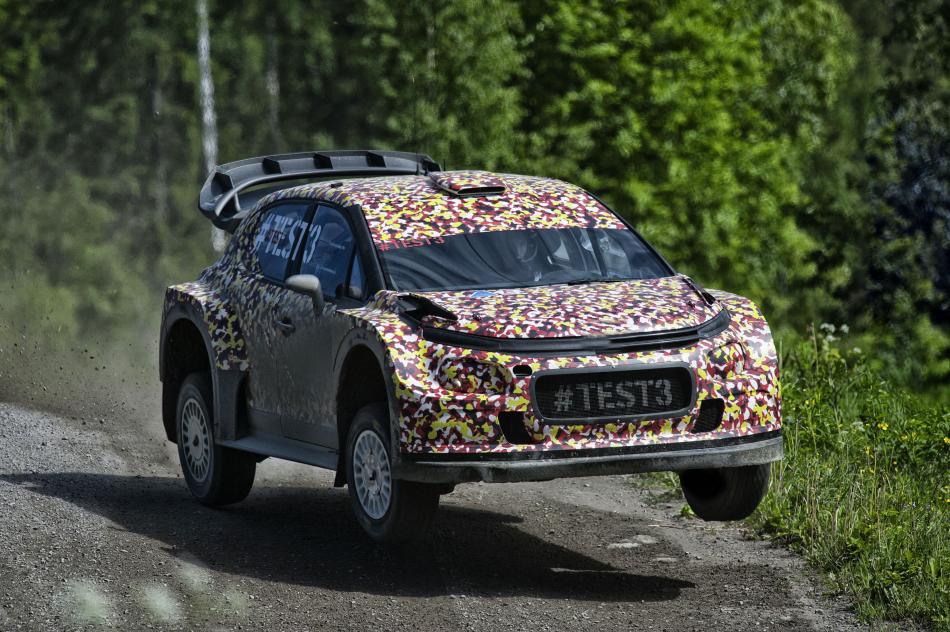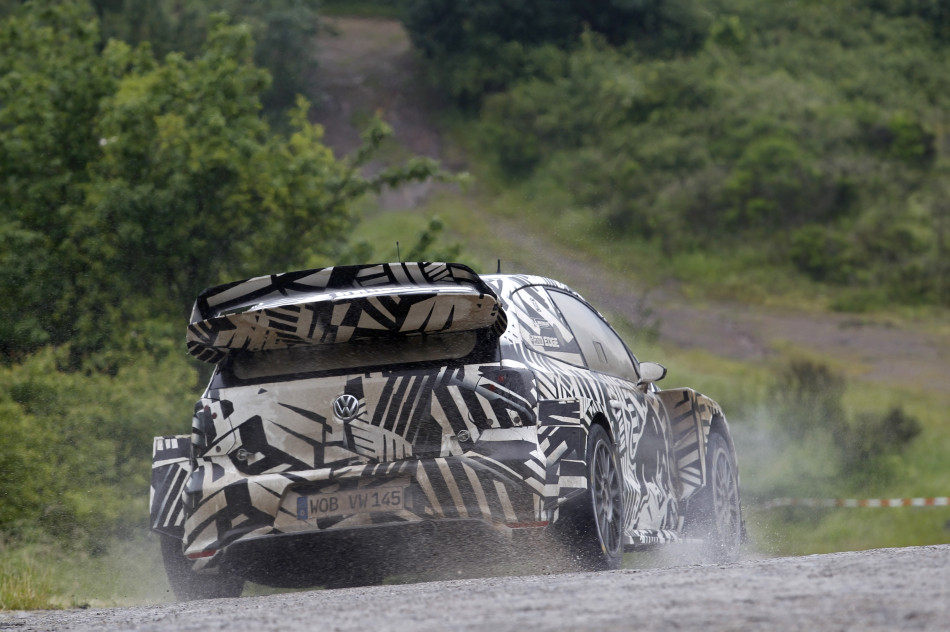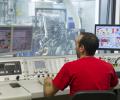The Evolution of the 2017 World Rally Car

The FIA World Rally Championship is set to move into a fresh and exciting era with the introduction of new technical regulations from 2017. Evolving from the success of the current World Rally Cars, next year’s regulations will deliver more of what the fans want to see and, as such, more distinctive, powerful and dramatic cars will hit the stages of the sport’s premier series.
Citroën, Hyundai, M-Sport, Toyota and Volkswagen have all committed to the Championship. The development of their respective World Rally Car machinery continues to be veiled in secrecy as each seeks to gain a technological advantage but, in a series of six features, the FIA, WRC Promoter and manufacturers uncover the potential of the new regulations and explain what they mean for the fans and the Championship as a whole.

FIA President, Jean Todt, Carlos Barbosa, President of the FIA World Rally Championship Commission, and Oliver Ciesla from WRC Promoter are the first to explore the rationale behind the 2017 Technical Regulations and how they will impact the Championship, its promotion and fan base.
Jean Todt, FIA President
What are your feelings about the 2017 FIA World Rally Championship?
Jean Todt:
“The sport is always moving forwards and clearly we want to have the cars more spectacular, we want to create more attraction and more interest for the fans. We are very happy to be able to have new manufacturers involved in the Championship who are joining the existing ones. When I speak about new manufacturers, the arrival of Toyota is very important for the Championship and of course the return of Citroën is another encouragement and they will join manufacturers like Volkswagen, Hyundai and Ford. The contribution of private teams is also essential so we have a lot of new ingredients, together with also rallies happening in different parts of the planet, television, new social media involved in rallying, so it looks very promising for the future.”
Who has been involved in the formulation of the 2017 Technical Regulations?
Jean Todt:
“It has been a very interesting process because everybody has been participating to those rules. Of course the World Rally Commission with its President Carlos Barbosa, and together with all the FIA team, Jarmo Mahonen, Michèle Mouton, the manufacturers, have been all working together and that’s the final result of all those consultations which we will be able to see in 2017.”
Controlling costs must have been an important part of the process?
Jean Todt:
“In any category of motor racing, the cost control is absolutely essential so we have always to be careful when we introduce a new regulation that it is not exceeding the cost, and with all the teams inside the FIA it is something where we will put great attention and continuous monitoring.”
How has safety been integrated into the development of these new regulations?
Jean Todt:
“We always put a priority on safety, even if on rallying it is more difficult because contrary to circuit racing where you work a lot on the design of the circuit you cannot work on the design of the road. So we have been working intensively on the car, and it’s not only linked to the safety of the teams, it’s also linked to the safety of the spectators. We are working very closely, hand in hand, with the organisers of every event and we are making some communication programme to educate the fans when they attend a rally, so we are a lot engaged to make sure that rallying is as safe as we can think.”
What are you most looking forward to about the 2017 WRC season?
Jean Todt:
“Personally I love rallying, I mean I started my career as a rally co-driver so even if sometimes I have some nostalgia about the format of rallying, about the length of the special stage, it’s one natural evolution of the sport. If you want to combine rallying with better coverage on television and through different medias, if you want to make sure that you address safety, if you want to make it more affordable, you need to accept some concessions. But clearly 2017 is really a year with a lot of hopes for the development of rallying, having learnt and understood quite a lot of things over the last decade during the evolution of rallying and motor sport.”

Carlos Barbosa, President, FIA World Rally Championship Commission
What has been the underlying intention of the new Technical Regulations?
Carlos Barbosa:
“We wanted to produce dynamic, exciting and distinctive cars which exude the spirit of motor sport. We want to achieve diversity so the fans can distinguish between the look of the cars, we want them to be excited by the spectacle and sound, we want the cars to set the heart racing and for them to develop into iconic rally machinery in years to come. A lot of our objectives were also based on the feedback we got from the FIA’s fan survey so hopefully the fans will be pleased with what’s to come.”
How is this going to happen?
Carlos Barbosa:
“The visual impact of the cars will be the most striking difference and they should look a lot more aggressive and individual. Greater freedom with the aerodynamics, in particular, will set these cars apart and hopefully make our fans dream about them, as they used to in years gone by.”

Oliver Ciesla, Managing Director, WRC Promoter
Looking ahead to an exciting season to come in 2017, how do you see the new technical regulations will help promote WRC?
Oliver Ciesla:
“We’re extremely confident that these regulations are the way forward. We’ve already seen from testing that the 2017 World Rally Cars will look extremely dynamic. Add this look to additional power and increased performance, and it will create a real ‘wow’ effect, bringing the wide-eyed response we want to generate from the fans and also on television.”
How was WRC Promoter involved in the process and decision making of changing the regulations?
Oliver Ciesla:
“Part of our way of working is that we continuously check we’re going in the right direction with what we do. We listen, of course, to what the teams say but also what our fans think. The trigger was a questionnaire we proposed to WRC fans in 2014 which brought us the feedback that the dramatic look and feel of cars, their sound and the exciting experience of watching them were the most important elements for us to deliver. We sat together with the teams and FIA and discussed the way forward to make cars look more dynamic, to give them increased performance and a more aggressive sound and that led to the decision to go ahead with the new regulations. We listened to our fans and wanted to react.”
It’s a joint effort with the teams, manufacturers and the fans, who are the most important people to a degree, but what about your collaboration with the FIA?
Oliver Ciesla:
“Once the strategy was agreed, it was embraced whole-heartedly by all parties and a lot of positive energy has gone into the development of the new cars from all sides. It was a very constructive process with major contributions from the FIA and especially from the teams. As you can imagine, it’s a big investment for teams to develop these new cars. There has been many hours of work for engineers and a lot of testing, but it’s extremely satisfying to see how enthusiastically the teams have responded.”
Next year Toyota is coming back. Citroën, having taken a sabbatical, is coming back. Longer term, how much do you think the dawn of a new era might attract more manufacturers to WRC in the future?
Oliver Ciesla:
“There’s a hugely positive feeling towards WRC from manufacturers in general. In 2017 we’ll have five of the 10 biggest car manufacturers in the world choosing WRC for their global motorsport activities, and that’s a big compliment to the development of our sport. They recognise the sport is moving forward quickly, and that WRC gives them a great opportunity to showcase the power, strength and qualities of their production-based cars in an environment that gives them global visibility from January to November. Will that attract new entrants? I don’t know, but we’re talking to other car manufacturers and we’ve had a lot of encouraging feedback and genuine enthusiasm from the recent developments.”
WRC is going to China, there’s a lot of appetite for the sport and the momentum is tangible. What about the prospect of other countries wanting to embrace WRC in the future?
Oliver Ciesla:
“The indications we have is that the number of countries and cities that have an interest in hosting a WRC event is growing, and that shows our excitement in the future is shared by potential organisers. We have an opportunity to carry WRC outside of Europe and into new continents and new countries. People acknowledge there is a resurgence in WRC and see the benefits for an event that is broadcast in 150 countries worldwide. From each rally we produce six hours of TV programmes that are seen by more than 60 million people and we have a growing number of cars, competitors and fans. It means big business for a city and a region, with people eating, drinking and sleeping for more than a week and the benefits we bring are being recognised by new countries we might go to in the future.”
How excited are you about the dawn of this new era?
Oliver Ciesla:
“We’re all excited and you can sense that excitement among the teams and in the service park. Everyone is talking about the 2017 World Rally Car and these new regulations could be a way forward to balance the sport at the beginning of a new era. New and returning manufacturers and established teams alike are all building new cars and must start from pretty much the same point. So maybe this will balance the sporting results and make WRC even more exciting.”
Watch the cars in action and hear from FIA President Jean Todt and WRC Promoter Oliver Ciesla below:

 Facebook
Facebook Twitter
Twitter






